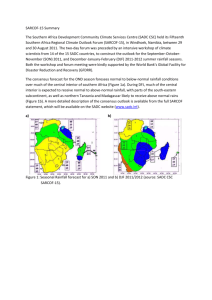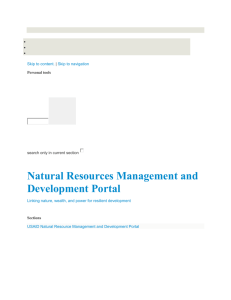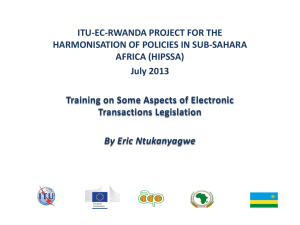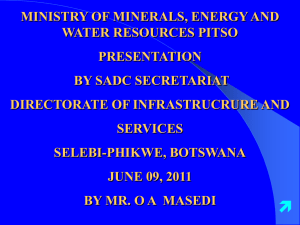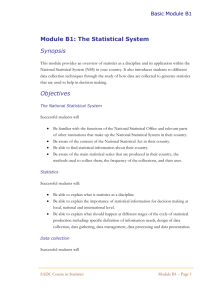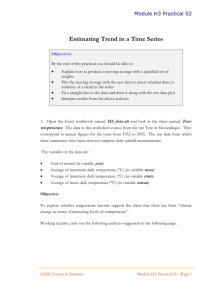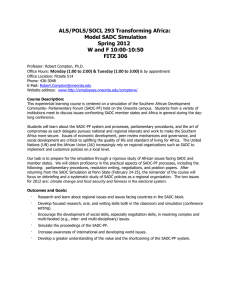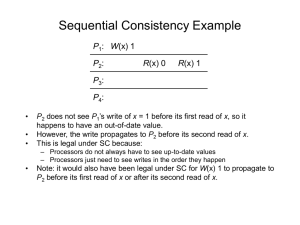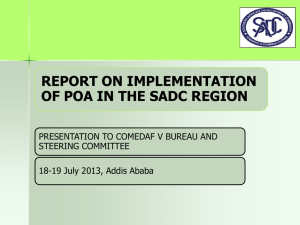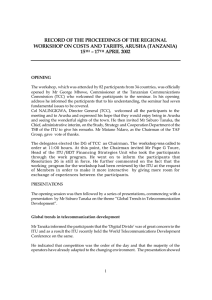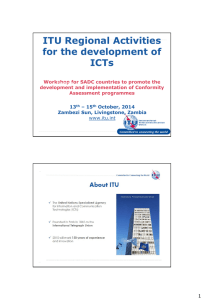RIC-Conclusions-v2
advertisement
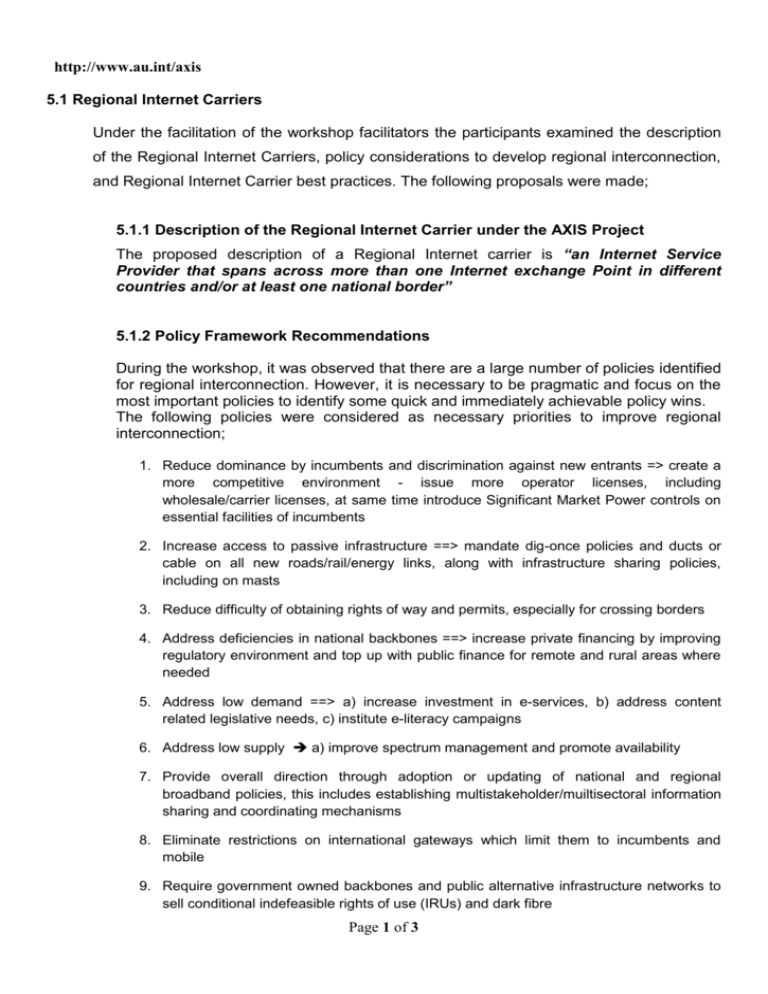
http://www.au.int/axis 5.1 Regional Internet Carriers Under the facilitation of the workshop facilitators the participants examined the description of the Regional Internet Carriers, policy considerations to develop regional interconnection, and Regional Internet Carrier best practices. The following proposals were made; 5.1.1 Description of the Regional Internet Carrier under the AXIS Project The proposed description of a Regional Internet carrier is “an Internet Service Provider that spans across more than one Internet exchange Point in different countries and/or at least one national border” 5.1.2 Policy Framework Recommendations During the workshop, it was observed that there are a large number of policies identified for regional interconnection. However, it is necessary to be pragmatic and focus on the most important policies to identify some quick and immediately achievable policy wins. The following policies were considered as necessary priorities to improve regional interconnection; 1. Reduce dominance by incumbents and discrimination against new entrants => create a more competitive environment - issue more operator licenses, including wholesale/carrier licenses, at same time introduce Significant Market Power controls on essential facilities of incumbents 2. Increase access to passive infrastructure ==> mandate dig-once policies and ducts or cable on all new roads/rail/energy links, along with infrastructure sharing policies, including on masts 3. Reduce difficulty of obtaining rights of way and permits, especially for crossing borders 4. Address deficiencies in national backbones ==> increase private financing by improving regulatory environment and top up with public finance for remote and rural areas where needed 5. Address low demand ==> a) increase investment in e-services, b) address content related legislative needs, c) institute e-literacy campaigns 6. Address low supply a) improve spectrum management and promote availability 7. Provide overall direction through adoption or updating of national and regional broadband policies, this includes establishing multistakeholder/muiltisectoral information sharing and coordinating mechanisms 8. Eliminate restrictions on international gateways which limit them to incumbents and mobile 9. Require government owned backbones and public alternative infrastructure networks to sell conditional indefeasible rights of use (IRUs) and dark fibre Page 1 of 3 10. Allow existing alternative infrastructure operators with fibre to provide wholesale services to others 11. Provide capacity building on interconnection for policy makers and regulators 12. Publish tariff and service level comparisons to measure progress and adapt strategies 13. Open access policies on on essential facilities such as; submarine cable landing stations, terrestrial and backbone infrastructure 14. Non-discriminatory access to services across borders 15. Ease licensing requirements for out of country service providers that do not sell local services for instance only want to peer or transit 16. Ease of access to wireless spectrum 17. Permissive legal environment for the development and hosting of content locally. 18. Establish business conducive environment by having suppliers for infrastructural components in-country is critical to ensure active competition and quality of service that relate to service delivery. 19. Standardised processes and guidelines for performing cross border interconnections in an open and transparent manner. 20. Advocate for stiffer penalties to address the issue of vandalism to protect telecommunications infrastructure External Consultations The following proposals will require external consultations with the relevant ministries in region but not limited to the below; 1. Digital taxation policies should be flexible and innovative to spur growth of e-business which will have further ongoing benefit. 2. Address issues relating to shared human resources by regional operators* 5.1.3 Establishing the SADC Policy and Regulatory Framework Committee During the workshop, the stakeholders/participants agreed to build on existing structures and ensure that the SADC Policy and Regulatory framework committee will develop the Policy Framework that will facilitate regional interconnection for the region. The main responsibilities of the SADC Policy and Regulatory Committee chaired by SADC Secretariat will include, but not limited to: Benchmarking of the national policy and regulations Status review of alignment with existing SADC model policies and regulations Identify the policy priorities that will facilitate regional interconnection Formulate a regional cross-border interconnection policy framework based on the identified priorities to be implemented by all member states in the respective regional Page 2 of 3 Formulate an Action Plan Identify the national and regional policy and regulation gaps The SADC Policy and Regulatory Committee will consist of representatives from the following organizations to ensure continuity; SADC, CRASA, SATA, Ministries, Regulators, Operators and ISPs with African Union as the coordinator. 5.1.4 The Minimum Criteria for Selecting ISPs that meet the definition of a regional Internet Carrier to be considered for the mentorship and capacity building program The proposed minimum criteria for selecting the ISPs to be considered for the mentorship and capacity building plan are as follows; 1. The ISP must demonstrate a growing business for the last 3 financial years and submit operational report and audited financials statements for the last 3 years 2. The ISP must be licensed as per the member states regulatory requirements 3. The ISP must provide a strategic development plan demonstrating its plans grow to other regions/countries 4. The ISP should demonstrate that it has the internal capacity to cater for and grow organically beyond its environment. For instance, it should have existing scalable business systems and practices in place. Page 3 of 3
